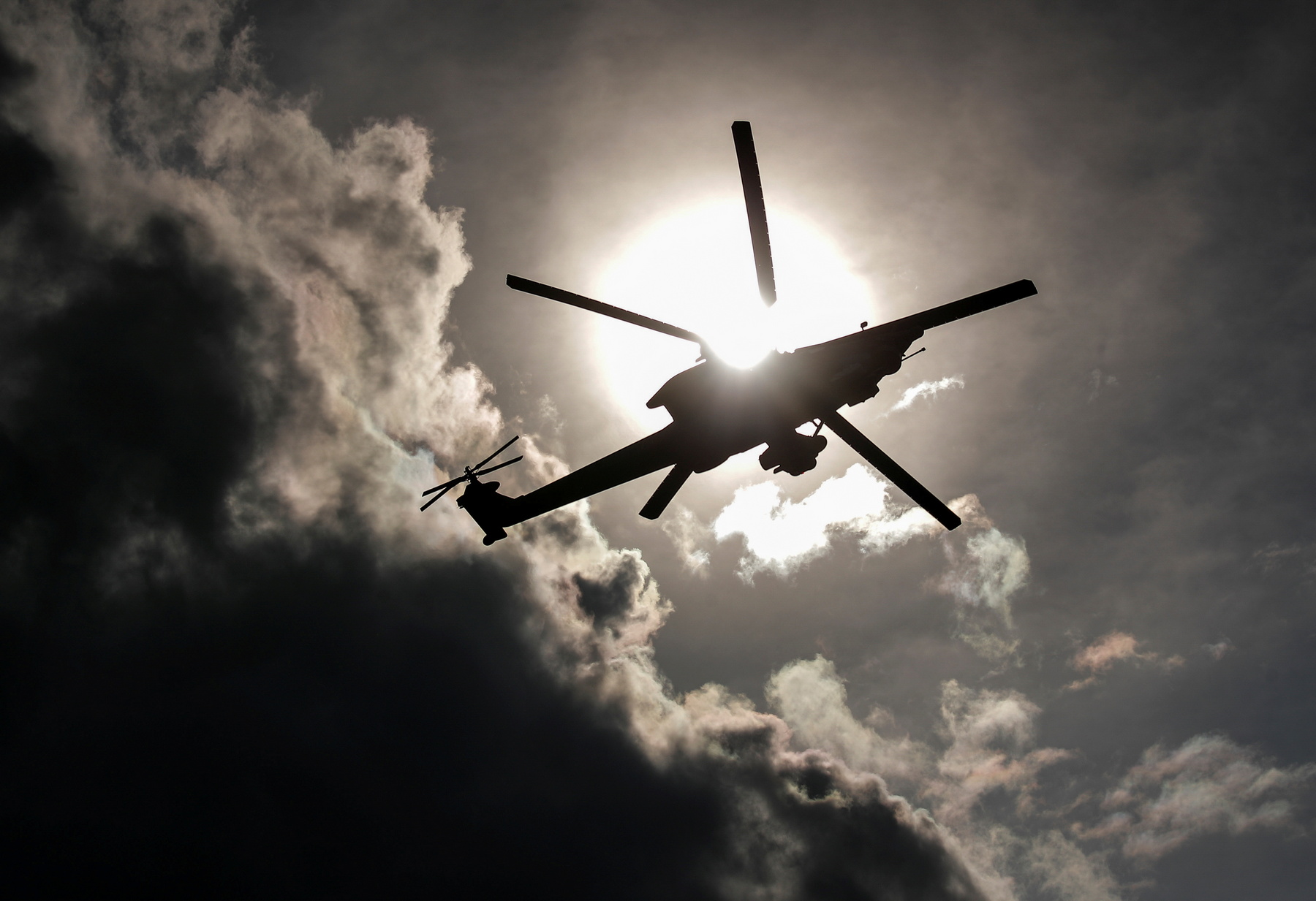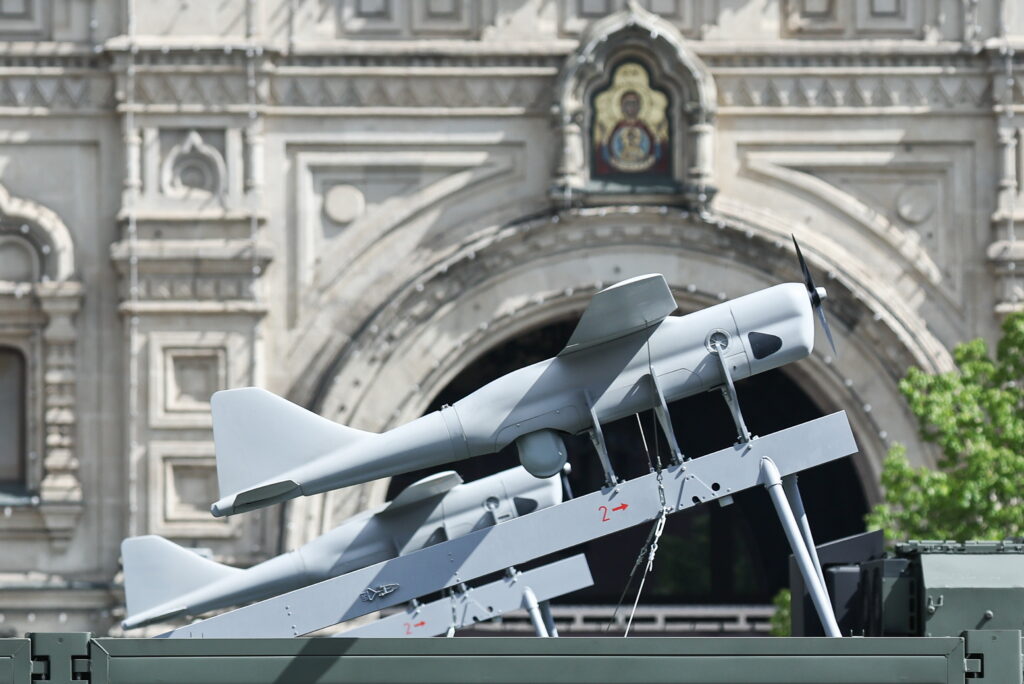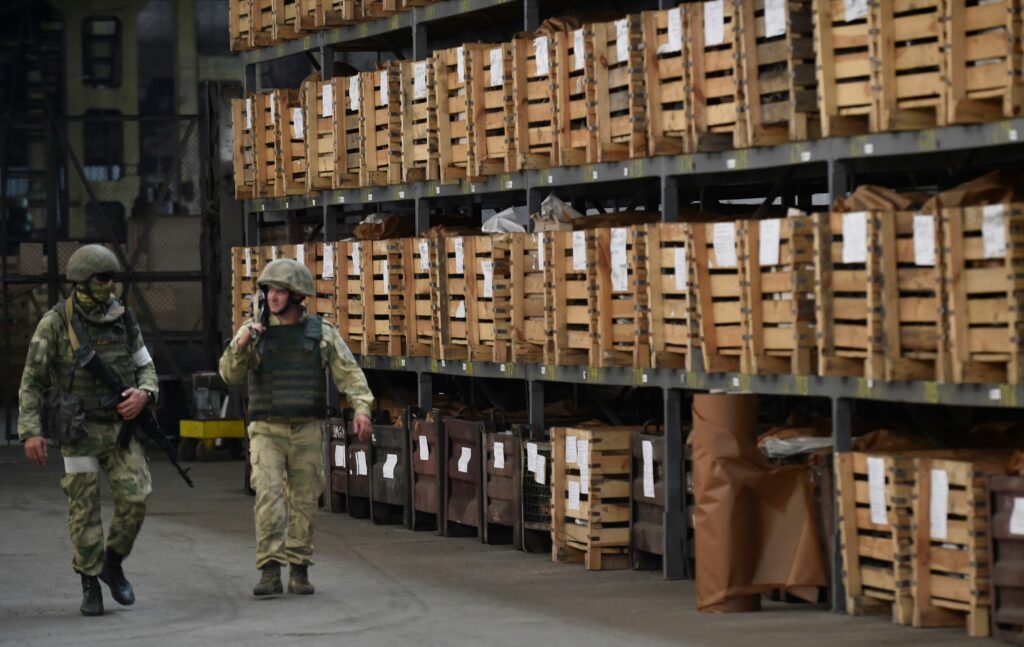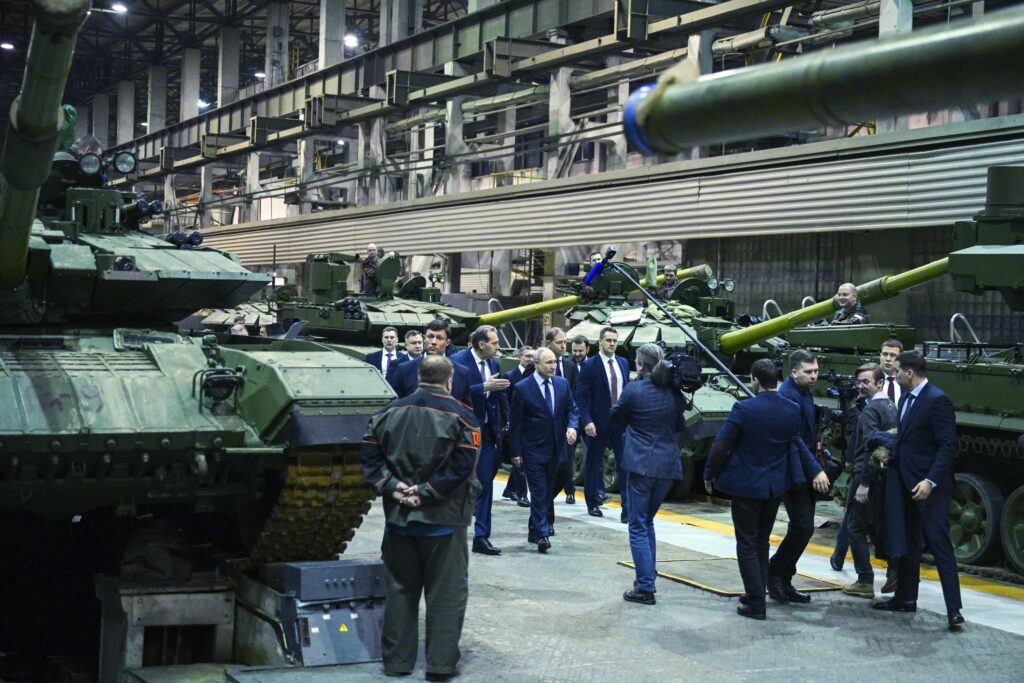In 2022, Russia’s defence policy will still be defined by the problem that took the final shape by the beginning of this decade, turning into one of the key issues for the Russian authorities. This problem concerns the balancing act between further development of the armed forces and the defence industry, the perceptible shortage of resources (people, technology, money) and the task of maintaining the stability of the Russian political and economic system. Moreover, after a decade of active (albeit still incomplete) rearmament and modernisation of the military infrastructure, the Russian leaders have got this issue back on their radar: how to maintain everything that has been created and supplied to the army. The leaders have also revisited the need for qualitative changes in military education and combat training, which was one of the unimplemented items of the 2009−2012 military reform agenda. Furthermore, the experience of the operation in Kazakhstan and the major redeployment of troops towards the western borders and into Belarus reflects more than the military capabilities Moscow has acquired: in fact, it shows what the Russian leaders view as the crucial, although not yet resolved, tasks of its defence policy.
Inevitable growth of military expenditures
Russia’s expenditures on national defence in current prices in roubles, after some (rather relative) stabilisation in 2017−2020, began to increase already in 2021, and further growth is planned until at least 2024. However, it should be remembered that Russia’s total defence expenditures do not boil down to this item alone. They must be added up with those expenditures classified under «National Security and Law Enforcement» which relate to the National Guard troops and the FSB (as has been done by SIPRI and as the Gaidar Institute did until 2019). And it is exactly the «National Defence» budget item that is key to understanding Russia’s defence policy.

* Including the nearly RUB 800 billion allocated at the end of 2016 by the Ministry of Finance to repay the defence industry’s debts to Russian banks;
** Based on information about the federal budget for 2022 and for the 2023−2024 planning period, with figures for the current year still subject to adjustment and plans for the next two years being subject to revision. Here, as in Table 2, the 2022−2024 expenditure expressed in USD is based on the average exchange rate recorded for 2021.
This item also includes the procurement of arms where the sums spent are important for the understanding of Russia’s defence policy priorities in the coming years.

* Including RUB 350 billion of defence industry debts written off through capital increases in enterprises. The problem started to be discussed back in 2019, but the final decision was not made until January 2020. At the same time, capital increase means that it was carried out outside the «National Defence» item, but within the «National Economy» item. Thus, some costs of arms production can continue to be compensated under this item;
** The estimate is based on the assumption that the Russian authorities have so far tried to maintain the share of arms purchases declared in 2017 (after overspending in 2016) at the level of 50% or slightly higher within the «National Defence» item;
*** These data take account of the plans announced by a representative of the Military Industry Committee panel in December 2021. If the Russian authorities come to an agreement on this issue, expenditures on «National Defence» in the 2024 federal budget will exceed RUB 4 trillion. However, it cannot be ruled out that this amount will be increased.
As the tables indicate, Russia’s spending on «National Defence» in current dollar prices peaked in 2013−2014, whereas the peak in current rouble prices occurred in 2016. If we count the spending at purchasing power parity or in constant rouble prices, it also peaks in 2016. These peaks will not be reached unless budget plans are revised towards a greater increase in defence spending and expenditure on arms procurement. And there are prerequisites for such an increase, namely the development of the 2024−2033 National Armaments Programme (NAP-2033).
It is worth remembering that since 2018, Russia has had a programme called NAP‑2027, which overlapped in timing with the NAP‑2020, in force since 2011. This overlap gives the Russian authorities the flexibility to reallocate specific projects, purchases and related expenses across the different NAPs. Otherwise, if the different National Armaments Programmes one another without any overlapping dates, their inevitable partial non-completion would make it difficult to administer the allocated funds. Moreover, this would exacerbate the contradictions between different agencies and state-owned defence corporations over the reallocation of funds at the times when one NAP is coming to an end but a subsequent NAP has not yet been launched. For example, if Borei submarines were planned under the NAP‑2020, but not all of them were built, they were almost automatically transferred to the NAP‑2027. Elements that are not produced under NAP‑2027 will automatically move to NAP‑2033, along with the funding.
However, the NAP‑2020 was planned at about RUB 20 trillion, but implemented at around RUB 15 trillion (approx. USD 303 billion). The planned size of the NAP‑2027 is also RUB 20 trillion, but it overlaps with the NAP‑2020 by almost RUB 5 trillion (approx. USD 75 billion). And while the NAP‑2027 is likely to be implemented in full in rouble terms, if we consider the devaluation of the rouble, its total dollar volume will account to approx. USD 250−260 billion. As regards the NAP‑2033, its discussed volume falls in the range of 20 to 30 trillion roubles and is likely to be closer to the upper limit. However, this will help to counteract the inflationary pressure only in a stable economic situation and, in dollar terms, this may at least return the arms purchases to a level comparable to that of the NAP‑2020, if not to exceed it. Hence Moscow’s desire to increase the volume of civilian products manufactured by the defence industry and to ensure a guaranteed market for these products becomes even more understandable.
There are also several other problems that should not be forgotten. Firstly, the quantity of armaments purchased in previous years still needs to be transformed into a new quality of the armed forces and military capabilities as such (see below). Secondly, it is necessary to complete a number of programmes in the 2020s that were started back in under the NAP‑2020 (the construction of the aforementioned Borei submarines, the growing production of fifth-generation fighters, etc.). Thirdly, a considerable part of the weapons and military equipment purchased in the past decade will have to undergo major overhauls and upgrades. For some complex systems (for example, in the field of radio-electronic warfare) modernisation becomes necessary before the planned overhaul period. And all this is placed in the context of the need to continue developing and procuring new weapons such as advanced combat drones, surface vessels, military rocketry and others. In addition, the infrastructure of military camps and bases needs to be maintained and the salaries of soldiers and defence industry personnel need to be increased, or at least indexed by the country’s inflation rate.
The conclusion from all this is that after some reduction and stabilisation of defence expenditure in 2017−2019, Russia seems to have already entered a phase of long-term increase in spending. From the perspective of the Russian authorities, the need for such an increase is no longer closely linked to the overall growth rate of the economy.
The issue of military education and combat training
Two years ago, Riddle already raised the problem of the saturation of the Russian Armed Forces with new weapons and military equipment, which is in conflict with the degree of combat training and the specific nature of relations within the army. This is one of the main hurdles on the way towards the transition from quantitative indicators to a new quality of Russia’s military capabilities. It seems, however, that this problem was fully understood by the Russian leadership towards the end of 2021.
The issue of developing unconventional, out-of-the-box thinking among Russian commanders, as well as the issue of career advancement opportunities (which reflects systemic problems also in this sphere). Moreover, extensive work began since 2022 on revising military manuals, tactical guidelines, training courses and norms. According to plans, this work will not be completed until 2025.
The Russian authorities are now forced to return to an issue that it abandoned in the very early 2010s. At that time, the Ministry of Defence under Anatoly Serdyukov made an attempt at introducing a major reform of military education modelling it on the systems existing in NATO countries. This triggered resistance within military institutions, academies and universities, as well as among the political leadership. The point was that such a reform would sooner or later lead to a mismatch between the quality of the officer corps and the civilian bureaucracy, to the advantage of the former, and this posed a threat to the sustainability of the country’s established political order.
However, the Kremlin is currently experimenting, trying to strike a balance between proactive and unconventionally thinking officers and well-trained soldiers, sergeants and warrant officers on the one hand, and ensuring their full loyalty to the country’s political leadership on the other. Although the possibility of finding such a balance seems questionable in principle, the Kremlin has no choice in this case. That said, money, together with the military mortgage programme, remains the most accessible instrument for the Russian authorities in these efforts. If we consider that expenditures only on servicemen’s salaries today (without the civilian personnel and expenditures on military mortgages) amount to 500−600 billion roubles a year, then this figure alone can be expected to increase by at least 100−150 billion roubles a year in the coming years. For example, an additional 60 billion roubles per year has been allocated only for increasing the number of contract soldiers in 2021−2023.
Some conclusions on the transfer of troops to Kazakhstan and Belarus
All of the foregoing comments can be juxtaposed with the events that took place in January 2022. In particular, this refers to a week-long peacekeeping operation of the Collective Security Treaty Organisation (CSTO) in Kazakhstan and a major redeployment of the Eastern Military District troops to Belarus for exercises in February, against the backdrop of general tensions in relations with the West and Ukraine.
Russia continues to hone the mobility of its armed forces within the continent, but is approaching the upper ceiling of its capabilities. For example, the transfer of 2,500 peacekeepers and the minimum quantity of military equipment required for the mission in Kazakhstan over the course of three days was ensured by more than 70 IL-76 aircrafts out of approx. 110 available airplanes. Thus, the Russian military transport aviation (even if we include some An-124s) is capable to transport about one brigade of paratroopers with standard armament within a few days. This state of affairs will continue throughout the 2020s, which generally confirms our conclusions published three years ago. However, this also gives rise to the following question: if Moscow seeks to strengthen its role in international relations away from its borders, then the NAP‑2033 will put more emphasis on increasing capabilities for maritime expeditions: from high-precision conventional missile weapons and their carriers to a increase in the number of modern amphibious warfare ships.
As regards the redeployment of weapons and military equipment by rail from the Far East to Belarus, which began in the second half of January 2022, there are two interesting facts that draw attention.
The redeployment as such, which is officially lower than the notification threshold under the Vienna Document 2011 (9,000 people), takes about three weeks when made by rail. And the Russian military is clearly learning how to optimise the use of available rail platforms, positioning some types of military equipment at the joints of adjacent platforms. This makes helps to increase the number of simultaneously transported equipment within the capacity of the Trans-Siberian railway allotted to the military. Such redeployments involve not just standard equipment but, judging by some photographs, also equipment from storage bases. Thus, there is a high degree of certainty that accelerated deployment of troops will be developed, without taking many weeks to move the troops from one part of the country to another with all the standard arms. Some of the arms will probably be taken from the storage bases close to the Russian borders.
The redeployments and military exercises that are taking place today are intended mostly to work out the logistics between various military districts located in different parts of the country, as well as to deploy and manage the troops in case of a major military campaign on the continent. Among its other goals and objectives, Moscow is using these actions to get a better understanding of where and how to further develop ground forces in the context of the high quantities of previously supplied weapons and the volumes of resources that will not be sufficient to address all the officially stated military needs, despite the forthcoming increases in spending.










